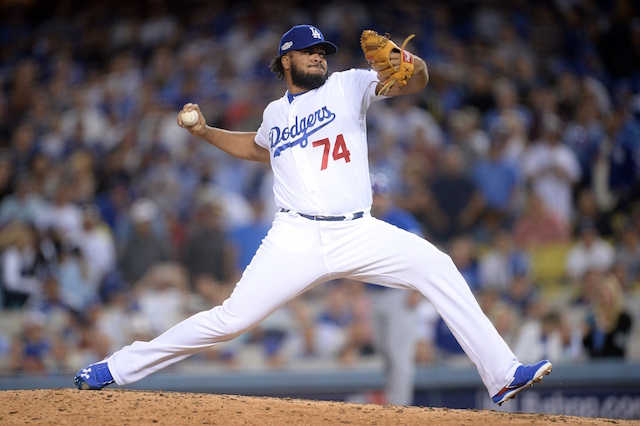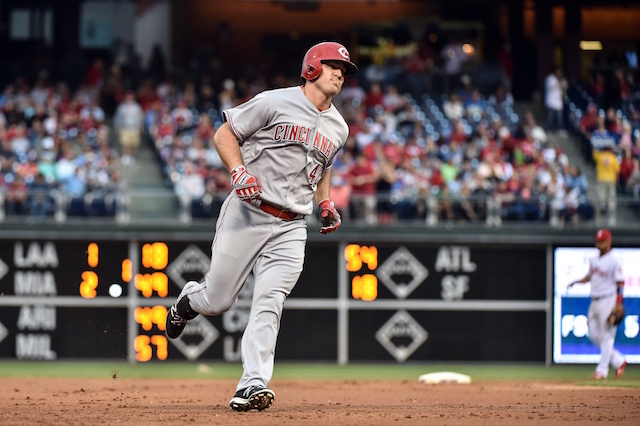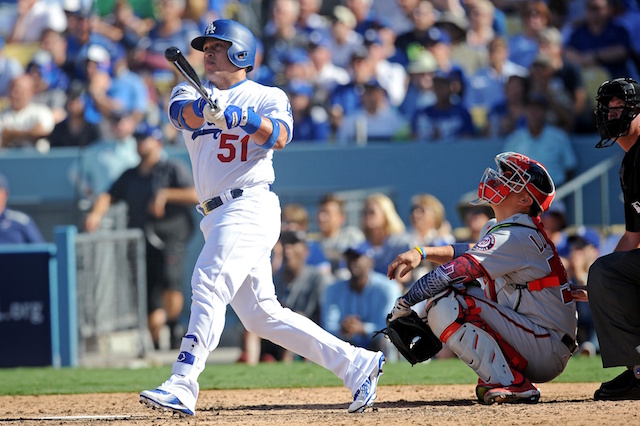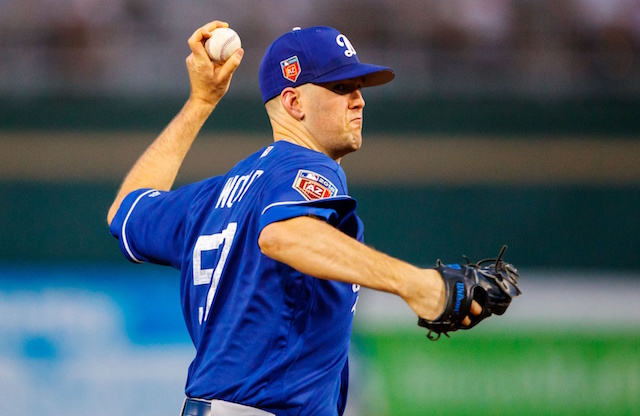The Los Angeles Dodgers this season became the first team in National League West history to win the division four consecutive years. More so than when the Dodgers went on the historic summer run in 2013, winning NL West title this year at one point seemed extremely unlikely.
Los Angeles set an MLB record for most players put on the disabled list (28) in a single season, and most notably were without Clayton Kershaw for two months. In addition, the Dodgers hardly had a “starting rotation” for a bulk of the season.
The San Francisco Giants held the best record in the Majors at the All-Star break and sat a comfortable eight games ahead of the Dodgers for first place in the division.
San Francisco went into a tailspin during the unofficial second half, and Los Angeles surged. The Dodgers went on to reach the NL Championship Series for the first time since 2013.
They fell short of their goal, finishing two wins shy of reaching the World Series, in large part due to a Chicago Cubs dormant offense that came to life in Game 4 of the NLCS.
With the Dodgers’ 2016 postseason run in the books, the DodgerBlue.com staff submitted their selections for the biggest takeaway from a fourth straight October run.
Matthew Moreno (@MMoreno1015)
While it’s readily apparent Kenley Jansen is one of the best closers in baseball, it was impossible to not have gained further appreciation for the right-hander this postseason.
Not only did Jansen answer the bell when the Dodgers needed him most, he willingly did so no matter what the situation was.
For as much as the team’s offensive struggles dominated headlines after Game 6, and rightfully so, let’s not forget Kershaw and Jansen were the only pitchers the Dodgers used. All Jansen did was throw three perfect innings with four strikeouts after entering in the sixth.
Nine days prior he set career highs with 2.1 innings and 51 pitches when he was called on in the seventh during Game 5 of the NL Division Series.
For much of the season I suspected the Dodgers would more aggressively pursue Aroldis Chapman over Jansen in free agency. I suppose that may still hold true, but Jansen certainly left a lasting impression.
Also not to be overlooked was Justin Turner. He set a Dodgers franchise record in NLCS Game 5 by extending his streak of reaching safely in the postseason to 15 consecutive games.
Like others, Turner cooled in the NLCS, but remained one of the club’s better hitters. That Jansen and Turner are eligible for free agency this winter is disconcerting.
Jared Massey (@JarredJMassey):
The Dodgers simply didn’t capitalize on opportunities. Whether it was stranding runners on base or failing to minimize big innings on defense, each series saw both teams give each other chances to gain an advantage.
While Los Angeles pulled through against Washington, Chicago took advantage of more situations when it mattered most. The offense didn’t show up in the NLCS, outside of Andrew Toles. In fact, the Dodgers combined for a .593 on-base plus slugging percentage against the Cubs.
To put that in perspective, Miami Marlins’ shortstop Adeiny Hechavarria was the worst hitter in the league who qualified for the batting title and he had a .594 OPS. Granted, the Cubs have an excellent pitching staff, but you can’t get to the World Series without hitting good pitching.
As for the pitching staff, where do you start? The Dodgers lost Game 5 with two of their best pitchers, Joe Blanton and Grant Dayton unexpectedly imploding, and Kenta Maeda couldn’t last more than 4 innings. And I won’t even mention the defense.
The problem wasn’t talent. Just look at the Cleveland Indians. The problem was the players simply didn’t come through when they had to. Whether that’s failure to prepare or bad coaching or another issue, it’s not something that can be predicted.
The Dodgers will get back into the postseason before long. Hopefully, next time they’ll be ready to rise to the occasion. A lefty-mashing outfielder and another late-inning reliever wouldn’t hurt.
Matt Borelli (@MattDodgerBlue):
My biggest takeaway from the postseason is that the offense was too inconsistent for any sustainable success.
Kershaw wasn’t at his best in Game 6 against the Cubs, but even if he allowed only one run, it would’ve been all for naught as the offense couldn’t push any runs across the board.
Even in the NLDS against the Nationals, the Dodgers had a relatively difficult time producing runs.
It’s simply unfair to have pinned all hope on Kershaw and Jansen specifically, with the former routinely starting on short rest and the latter logging multiple innings in an outing on different occasions.
Daniel Starkand (@DStarkand):
My takeaway from the postseason is that while the Dodgers front office did a great job last offseason and during the season, they didn’t quite do enough to win a World Series. If you look at the Cubs and Indians, they both acquired dominant backend-of-the-bullpen relievers before the trade deadline in Chapman and Andrew Miller.
The bullpen was the Dodgers’ biggest point of weakness the past few postseasons, and their bullpen acquisition this past year was Joe Blanton, who came up big for them all season but at this stage of his career should not have had to play as large of a role as he did.
Additionally, the Dodgers just had too many left-handed bats. We all know they couldn’t hit left-handed pitching, but they were even susceptible to right-handed pitching if the pitcher had a good changeup, i.e. Kyle Hendricks and Max Scherzer.
Kershaw again suffered from bad luck, but proved he can pitch well in the postseason, so I’m happy we can put that narrative to bed.
Lastly, I know he wanted too much money and too many years on his contract, but a playoff rotation of Kershaw, Zack Greinke, Rich Hill and Maeda would have looked pretty good…








